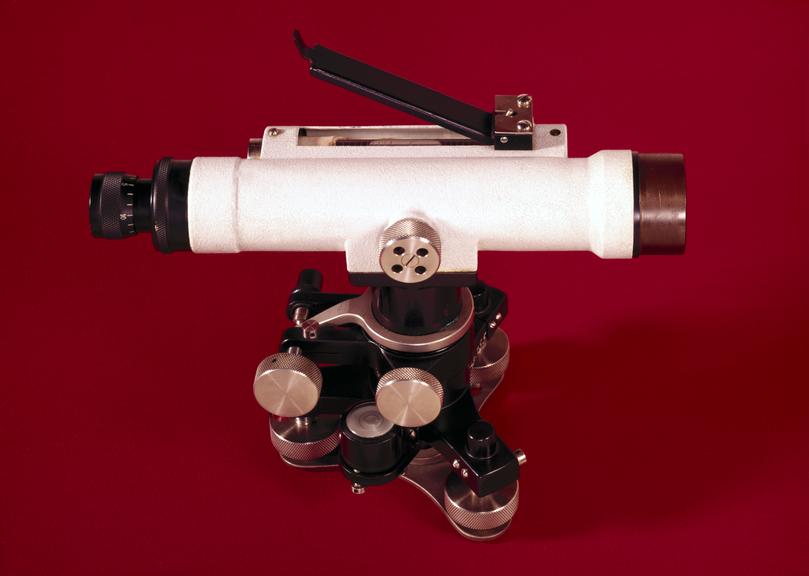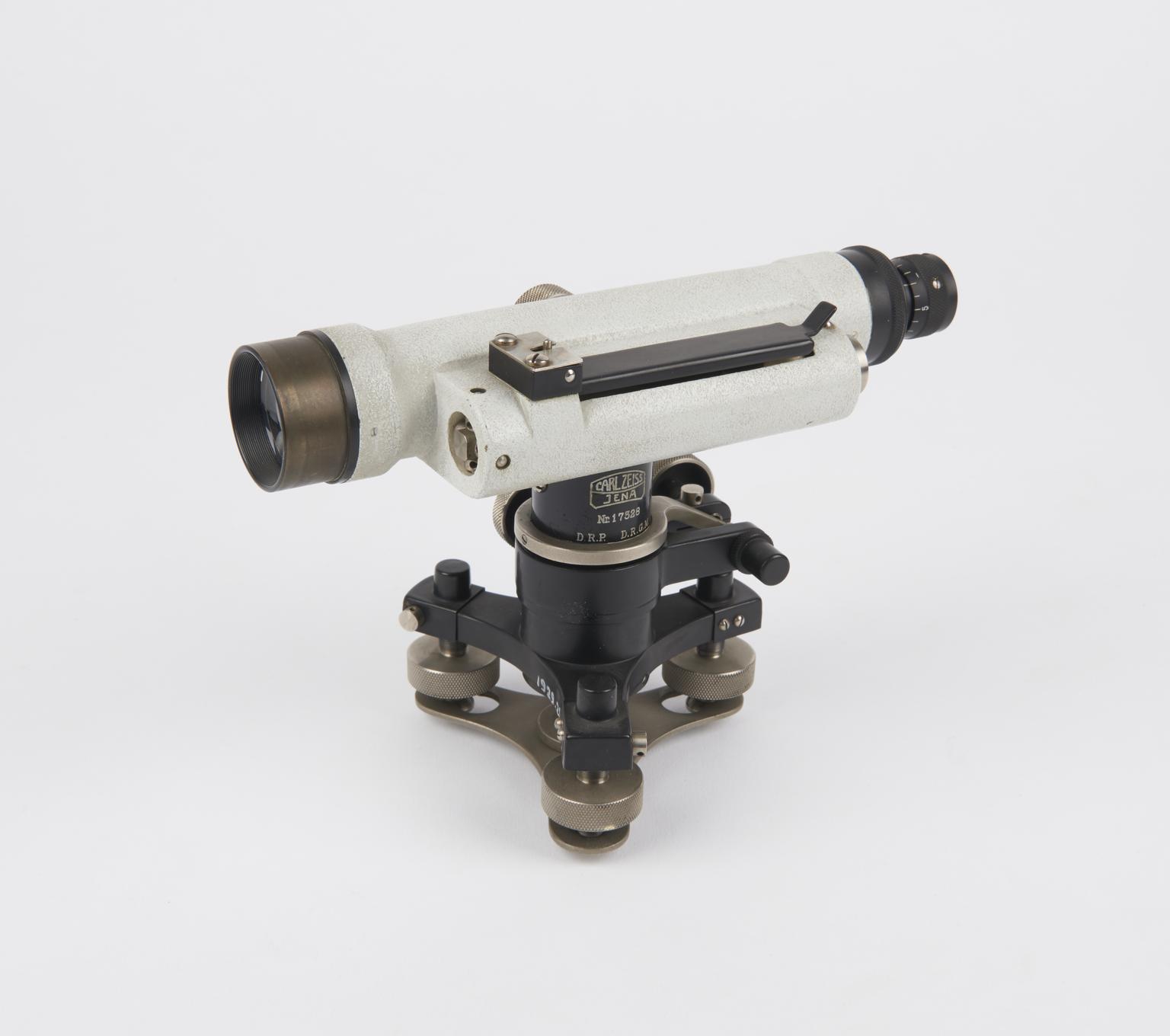
Box for Surveyor's level, German, 1926-1929
Box for Surveying Level by Carl Zeiss Jena, Germany (supplied by Carl Zeiss (London) Ltd.), 1926-1929.
- Object Number:
- 1929-255 Pt1
- type:
- instrument case
- Image ©
- The Board of Trustees of the Science Museum

Surveying Level Model No. IV, Serial No.No. 17328, with case, by Carl Zeiss Jena, Germany (supplied by Carl Zeiss (London) Ltd.), 1926-1929. Original designed by Heinrich Wild.
Levelling is the method used by surveyors to determine the relative heights of different points on the earth's surface, but originally referred to the simple procedure of determining the horizontal. The spirit level was invented in the 1660s, the horizontal being determined by the position of a bubble in a sealed tube of either alcohol or ether. Attached to a telescope, rapid survey work was be carried out using a graduated pole to measure differences in height. This example was designed in 1910 by Heinrich Wild and manufactured by the company of Carl Zeiss.
The spirit level is an application of the fact that the action of gravity renders the surface of a still liquid a horizontal or level plane. Sensitivity and ease of observation are gained by partly filling a glass tube with the liquid, either alcohol or ether, leaving a small space occupied by air and vapour. This gaseous content of the tube forms a bubble which moved about as the tube is tilted. An essential feature is that the tube is not given a parallel internal bore but one which is barrel-shaped, the greatest internal diameter being at the centre of the tube. As a consequence, the bubble is accurately centered only when the longitudinal axis of the tube is precisely horizontal. Mounted in a strong container having a flat base, the spirit level is then the familiar form used by the carpenter, builder and others to determine a level surface.
To the surveyor, the term spirit level means more than this. He gives the name to instruments of the type shown here, in which the bubble tube is rigidly attached to a casting bearing a telescope and mounted on levelling screws. Comparison of the heights of two or more adjacent points on the earth's surface is made by levelling the instrument on a tripod and then observing through the telescope a graduated staff held vertically on each point in turn. The difference in the readings obtained provides the surveyor with the required differences obtained provides the surveyor with the required differences in height above some standard datum line.

Box for Surveying Level by Carl Zeiss Jena, Germany (supplied by Carl Zeiss (London) Ltd.), 1926-1929.

Surveying Level Model No. IV, Serial No.No. 17328, by Carl Zeiss Jena, Germany (supplied by Carl Zeiss (London) Ltd.), 1926-1929.
Levelling is the method used by surveyors to determine the relative heights of different points on the earth's surface, but originally referred to the simple procedure of determining the horizontal. The spirit level was invented in the 1660s, the horizontal being determined by the position of a bubble in a sealed tube of either alcohol or ether. Attached to a telescope, rapid survey work was be carried out using a graduated pole to measure differences in height. This example was designed in 1910 by Heinrich Wild and manufactured by the company of Carl Zeiss.